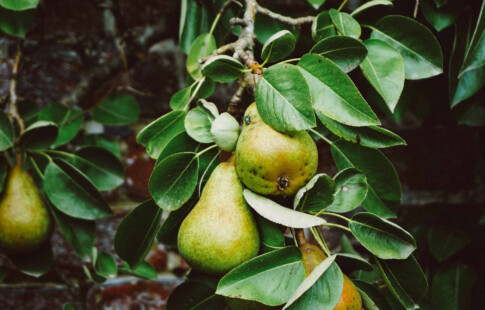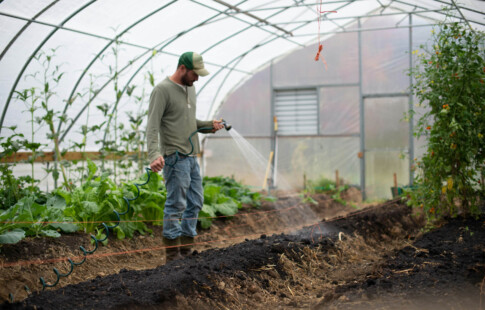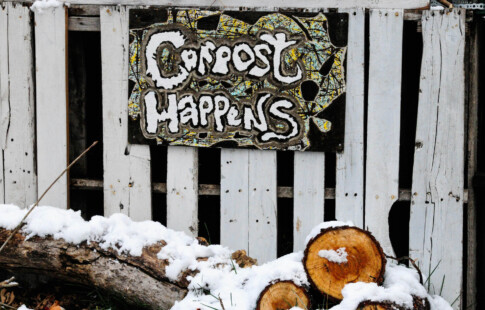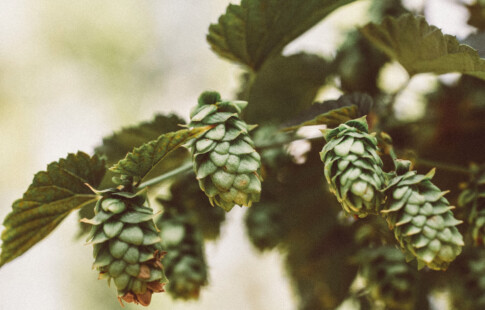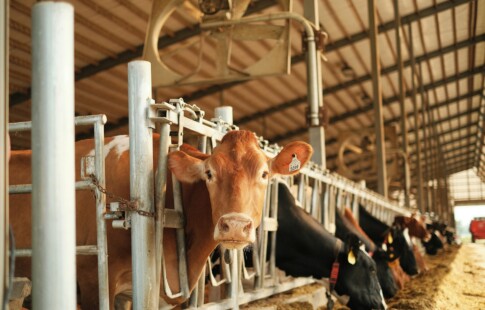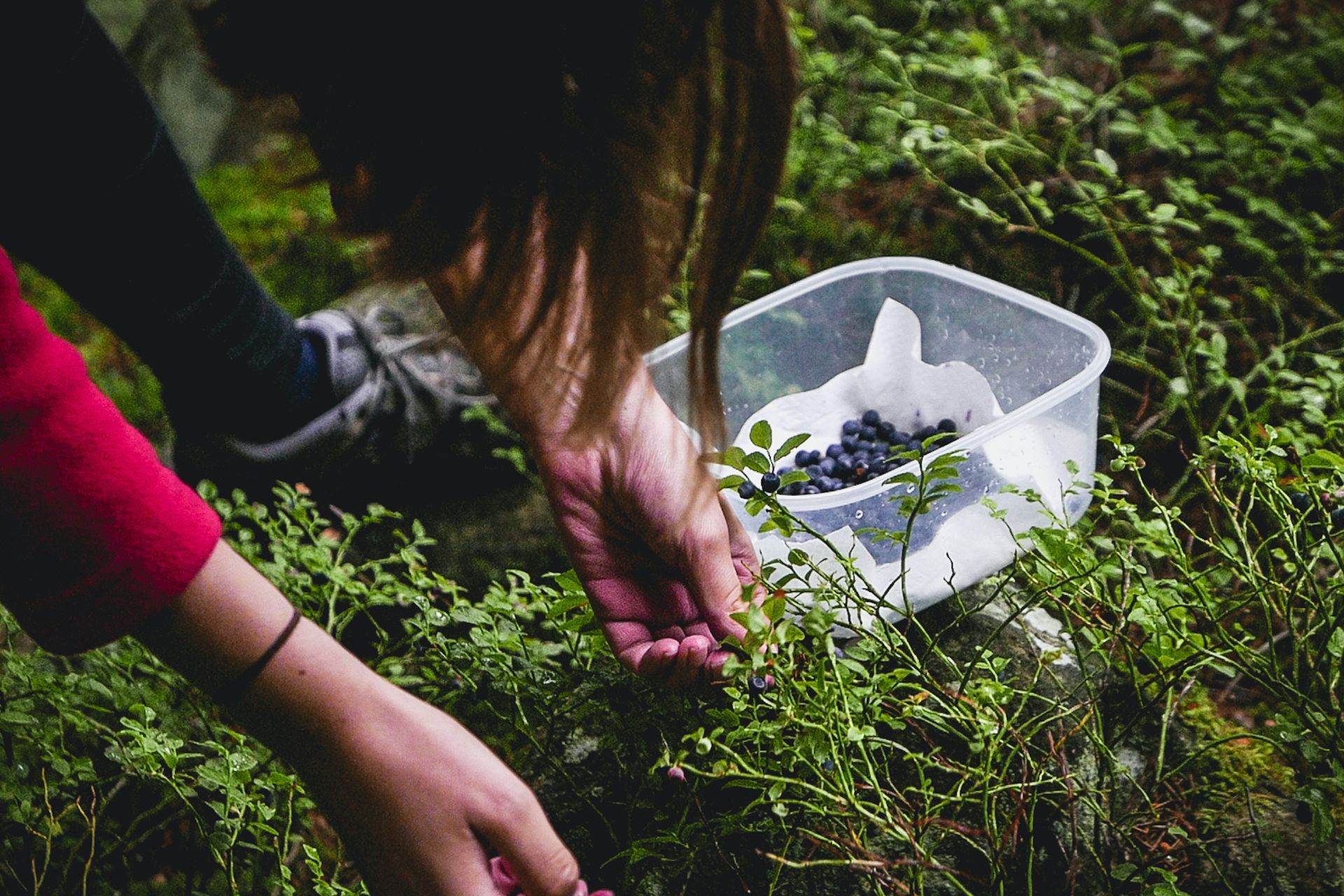
What is a Food Forest?
We are reader-supported. When you buy through links on our site, we may earn affiliate commission.
Food forests are becoming more popular in the edible landscaping sector. Compared to standard forests, these forests are capable of growing food and allowing ecosystems to thrive. Continue reading to learn more about food forests and their benefits.
What is a Food Forest?
A food forest, also known as a forest garden, is a diverse, natural forest ecosystem containing various food plants for human consumption. Food forests mimic the natural ecosystems and patterns, allowing edible plants to grow and flourish. Typically, food forests are three-dimensional, where everything grows up, down or out.
A food forest has two key features — plant layers and plant types. Various plant types can be used to create a food forest. For example, garlic, kale, chives, leeks and celery are some of the most popular edible plants in a food forest.
Food forests are relatively new in the edible landscaping industry but have roots in ancient civilizations. These forests allow indigenous people to grow an abundant variety of food to feed everyone.
The 7 Layers of a Food Forest
The layers of a food forest are crucial, as they mimic the verticality of standard forests. Farms and gardens typically grow along the ground in flat planes, while forests are much more expansive and grow up and out. To understand the structure of a food forest, it’s important to have a basic understanding of each layer and its purpose.
1. Canopy/Overstory
The canopy is the tallest layer of a food forest. It consists of mostly large fruit and nut trees, such as pecans, walnuts and chestnuts. Since the canopy layer is at the top of the food forest, it’s the layer that receives the most sunlight.
2. Understory
The next layer in a food forest is the understory layer. It consists mostly of small fruit and nut trees. You’d normally see things like apples or persimmons growing in the understory layer. This layer can tolerate partial sunlight.
3. Shrub
The shrub layer can tolerate shade and is perfect for growing fruiting shrubs such as currant, elderberry and huckleberry. Berries and large perennials are often found in the shrub layer of a food forest.
4. Herbaceous
As its name suggests, the herbaceous layer is where you’ll find all types of herbs, like rosemary, mint, lavender and more. In addition to common herbs, this layer contains leaf-bearing, perennial plants that produce asparagus and rhubarb.
5. Rhizosphere
The rhizosphere, sometimes called the root layer, is the fifth layer of a food forest. This layer is a part of a food forest where you might see annual — plants that complete their life cycles in one season. Some common examples of root crops found in the rhizosphere are carrots, turnips, beets and other vegetables.
6. Ground cover
The ground cover layer is also known as the soil layer in food forests. It’s made up of horizontally spreading cover crops such as alpine strawberries, sorrel or any number of other green spreaders.
7. Vine
Another layer — the vine layer — consists of the plants growing vertically, often wrapping around trees and other plants. Shade-tolerant vines, such as grapes, make up the vine layer. These plants use the overstory and understory as trellising.
These seven layers are the most common in food forests. However, some professionals in the agriculture industry recognize an eighth layer — the mycelial layer. The eighth layer refers to the area that grows mushrooms, which typically wrap around or bore into tree roots.
It’s worth noting that a food forest can still exist without each individual layer. Plants in a forest with fewer layers will still benefit from each other. For example, if there is no room for a canopy layer, each plant will play a major role in the flourishing of the forest. Take a plum tree, for instance. It will still provide plums, food for bees and insects and wind shelter for other plants in the forest.
Benefits of Food Forests
Now that you’re aware of the layers of a food forest, we can discuss their benefits. The benefits come from three key features of a food forest, including:
- Growth of perennial plants
- Takes advantage of vertical space
- Fills all plant niches, also known as growing space
Here are some key benefits of food forests and why they’re important in today’s agriculture landscape.
Recycle Nutrients
When plants in a food forest shed leaves, it creates mulch on the ground layer, which helps to feed soil microbes and earthworms. In turn, they release nutrients, which the original plants reuse. They do not need to fertilize a food forest, as they do so naturally.
Protect the Soil
Another benefit of food forests is that there’s no need to dig, rototill or disturb the soil. The soil in a food forest can maintain its structure and allows plants, fungi, insects, bacteria and other essential living things to grow.
Conserve Water
Perennial plants are a crucial aspect of food forests, especially since they can dig deeper into the soil to retrieve water and nutrients than other plants. Food forests require much less water than traditional forests, making conserving water easier. Water conservation is an important aspect of creating a more sustainable ecosystem.
Less Labor
After the initial design and planting in a food forest, gardeners do not have to spend time laboring over it. Food forests are generally more self-sufficient than regular row-crop gardens. There are no weeding, fertilizing or watering chores to do. Gardeners need to tend to their food forests to prevent pests, but other animals — like birds — can help with pest control.
High Yields
To reiterate, perennial plants help food forests grow edible plants throughout all four seasons. Summer berries, spring asparagus and root crops in the early winter often come in high yields, making food forests much more important during all the year’s seasons.
Food Forests Positively Impact the Environment
It’s no secret that the global climate change crisis is becoming more of a concern now than ever. While planting more food forests around the world won’t combat or eliminate the issues brought about by climate change completely, they can help with water conservation, improve air quality and serve as food sources.
This could be highly beneficial in areas with food insecurity, a lack of clean water or poor outdoor air quality. Food forests will continue to become more popular as sustainable farming practices enter the spotlight.
Share on
Like what you read? Join other Environment.co readers!
Get the latest updates on our planet by subscribing to the Environment.co newsletter!
About the author
Jane Marsh
Starting from an early age, Jane Marsh loved all animals and became a budding environmentalist. Now, Jane works as the Editor-in-Chief of Environment.co where she covers topics related to climate policy, renewable energy, the food industry, and more.

